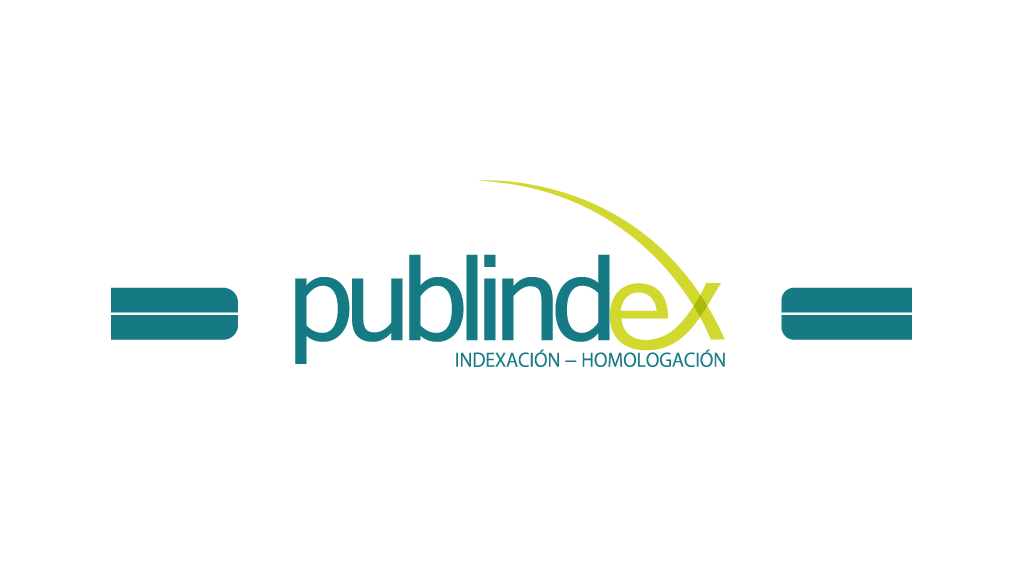Authors who publish in this journal agree to the following terms:
Acta Colombiana de Psicología complies with international intellectual property and copyright laws, and particularly with Article No. 58 of the Political Constitution of Colombia, Law No. 23 of 1982, and the Agreement No. 172 of September 30, 2010 (Universidad Católica de Colombia Intellectual Property Regulation).
Authors retain their copyright and grant to the Acta Colombiana de Psicología the right of first publication, with the work registered under Creative Commons attribution license, which allows third parties to use the published material, provided they credit the authorship of the work and the first publication in this Journal.
Abstract
This study aimed to adapt the Sense of Community Index (SCI-II) in Chilean schools and to examine its psychometric properties. The validation process was conducted with 2871 students from 6th grade of elementary school to 4th grade of high school in a city of Northern Chile. A 52.4 % (n = 1506) of the sample identified with the female gender and the average age of the sample was 14.64 (SD = 2.046). An exploratory factor analysis indicated a three-factor solution: school connectivity, valued belongingness, and membership-reciprocity. The reliability of the scale was adequate (a = .879 for school connectivity, a = .884 for valued belongingness and a = .716 for membership-reciprocity), and confirmatory analyzes indicated adequate adjustment rates (CFI = .939; TLI = .933). It was concluded that the proposed model of the adapted version is valid and is appropriate to be used in future studies on the sense of community in the school context. Finally, the article discusses the value of this instrument for public policies and innovation processes of public education.

References
Ariza, T., Quevedo-Blasco, R., & Buela-Casal, G. (2014). Satisfaction of social and legal sciences teachers with the introduction of the European Higher Education Area. European Journal of Psychology Applied to Legal Context, (6), 9-16. doi:10.5093/ejpalc2014a2
Asociación de Municipalidades de Chile (2016). Calidad de la Educación en las Comunas de Chile. Recuperado de http://www.amuch.cl/pdf/estudio_calidad_de_la_educacion_2015.pdf
Ato, M., López, J. & Benavente, A. (2013). Un sistema de clasificación de los diseños de investigación en psicología. Anales de Psicología, 29(3), 1038-1059. doi:10.6018/analesps.29.3.178511
Bandalos, D.L., & Finney, S.J. (2010). Factor analysis: Exploratory and confirmatory. En G.R. Hancock & R.O. Mueller (Eds.), The reviewer’s guide to quantitative methods in the Social Sciences (pp. 93-114). New York: Routledge.
Battistich, V., & Hom, A. (1997). The relationship between student`s sense of their school as a community and their involvement in problem behaviors. American Journal of Public Health, 87, 1997-2001. doi:10.2105/AJPH.87.12.1997
Baumeister, R., & Leary, M. R. (1995). The need to belong: desire for interpersonal attachments as a fundamental human motivation. Psychological Bulletin, 117, 497-529. doi:10.1037/0033-2909.117.3.497
Bond L, Butler H, Thomas L, Carlin J, Glover S, Bowes G, & Patton G. (2007). Social and school connectedness in early secondary school as predictor’s of late teenage substance use, mental health, and academic outcomes. Journal of Adolescent Health, 40(4), 357. doi: 10.1016/j.jadohealth.2006.10.D13
Chavis, D. & Pretty, G. (1999). Sense of community: Advances in measurement and application. Journal of Community Psychology, 27(6), 635-642.
Chavis, D., Lee, K., & Acosta J. (2008). The Sense of Community (SCI) Revised: The Reliability and Validity of the SCI-II. Paper presented at the 2nd International Community Psychology Conference, Lisboa, Portugal.
Dowdy, E. T., Furlong, M. J., Eklund, K., Saeki, E., & Ritchey, K. (2010). Screening for mental health and wellness: Current school-based practices and emerging possibilities. In B. Doll, W. Pfohl, & J. Yoon (Eds.), Handbook of youth prevention science (pp. 70-95). New York, NY: Routledge.
Elvas, S., & Moniz, M. J. V. (2010). Sentimento de comunidade, qualidade e satisfação de vida. Análise Psicológica, 28(3), 451-464. doi:10.14417/ap.312
Flaherty, J., Zwick, R. R., & Bouchey, H. A. (2014). Revisiting the sense of community index: A confirmatory factor analysis and invariance test. Journal of Community Psychology, 42(8), 947-963.
Frederickson, N. & Baxter, J. (2009). Belonging. En N. Frederickson & S. Dunsmuir (Eds.), Measures of Children´s Mental Health & Psychological Wellbeing: A portfolio for education and health professionals. London: GL Assessment.
Goodenow, C. (1993). Classroom belonging among early adolescent students: Relationships to motivation and achievement. Journal of Early Adolescence, 13, 21-43. doi: 10.1177/0272431693013001002
Haquin, C., Larraguibel, M. & Cabezas, J. (2004). Factores protectores y de riesgo en Salud Mental en niños y adolescentes de la ciudad de Calama. Revista chilena de pediatría, 75(5), 425-433. Recuperado de: https://dx.doi.org/10.4067/S0370-41062004000500003
Hattori M, Zhang G, Preacher KJ. (2017). Multiple Local Solutions and Geomin Rotation. Multivariate Behavioral Research, 52, 720-731. doi:10.1080/00273171.2017.1361312
Hombrados, M.I. (2011). Sentido de comunidad. En F. Molero, I. Fernández, y J.F. Morales (Eds.), Psicología de la intervención comunitaria. (pp. 97-128). Bilbao: Desclée de Brouwer.
Israelashvili, M. (1997). School adaptation, and school member’s future expectations of adolescents. Journal of adolescence, 20, 525-535. doi:10.1006/jado.1997.0107
Jason, L.A., Stevens, E., y Ram, D. (2015). Development of a three-factor psychological sense of community scale. Journal of Community Psychology, 43, 973-985. doi:10.1002/jcop.21726
Long, D. A., & Perkins, D. (2003). Confirmatory factor analysis of the sense of community index and development of a brief SCI. Journal of Community Psychology, 31(3), 279-296. doi:10.1002/jcop.10046
McMillan, D. W. y Chavis, D. M. (1986). Sense of community: A definition and theory. Journal of Community Psychology, 14, 6-23.
Moscardino, U., Scrimin, S., Capello, F., & Altoè, G. (2010).. Social Science & Medicine, 70(1), 27-34. doi:10.1016/j.socscimed.2009.09.035
Obst, P. L., & White, K. M. (2004). Revisiting the sense of community index: A confirmatory factor analysis. Journal of community psychology, 32(6), 691-705.
Pereda, C. (2003). Escuela y comunidad: observaciones desde la teoría de sistemas sociales complejos. Revista Electrónica Iberoamericana sobre Calidad, Eficacia y Cambio en Educación, 1(1), 0.
Peterson, N. A., Speer, P. W. y McMillan, D. W. (2008). Validation of a Brief Sense of Community Scale: Confirmation of the principal theory of sense of community. Journal of Community Psychology, 36, 61-73. doi:10.1002/jcop.20217
Peterson, N. A., Speer, P. W., & Hughey, J. (2006). Measuring sense of community: A methodological interpretation of the factor structure debate. Journal of Community Psychology, 34(4), 453-469. doi:10.1002/jcop.20109
Pretty, G. H., Andrews, L., & Collett, C. (1994). Exploring adolescents’ sense of community and its relationship to loneliness. Journal of Community and Applied Social Psychology, 22, 346-358. doi: 10.1002/1520-6629(199410)22:4<346::AID-JCOP2290220407>3.0.CO;2-J
Puddifoot, J. (1994). Community identity and sense of belonging in a northeastern English town. Journal of social Psychology, 134, 601-608. doi: 10.1080/00224545.1994.9922990
Redding, S. (2001). The Community of the School. En Redding, S., & Thomas, L. (Eds.), The Community of the School (pp.1-25). United States of America: The Academic Development Institute.
Rojas-Andrade, R., & Leiva, L. (2015). Psychopathology and Occasional Victimization in a Sample of Chilean Students. Universitas Psychologica, 14(1), 165-176.
Rostosky, S., Owens, G., Zimmerman, R. & Riggle, E. (2003). Associations among sexual attraction status, school belonging, and alcohol and marijuana use in rural high school students. Journal of Adolescence, 26, 741-751. doi:10.1016/j.adolescence.2003.09.002
Sánchez-Vidal, A. (2001). Medida y estructura interna del sentimiento de comunidad: Un estudio empírico. Revista de Psicología Social, 16 (2), 157-175.
Sánchez-Vidal, A. (2009). Validación discriminante de una escala de sentimiento de comunidad. Análisis comparativo de dos comunidades. International Journal of Psychology and Psychological Therapy, 9, 161-176.
Sarriera, J. C., Strelhow, M. R. W., Bedin, L. M., Moura Junior, J. F., Rodrigues, A. L., & Calza, T. Z. (2015). Adaptation of the Sense of Community Index for Brazilian children. Paidéia (Ribeirão Preto), 25(60), 39-47. doi: 10.1590/1982-43272560201506
Sayer, E., Beaven, A., Stringer, P., & Hermena, E. (2013). Investigating sense of community in primary schools. Educational & Child Psychology, 30(1), 9-25. doi: 288139501
Tanaka, J. S. (1987). "How big is big enough’": Sample size and goodness of fit in structural equation models with latent variables. Child Development, 58(1), 134-146.
Watson, T. N., & Bogotch, I. (2016). (Re) Imagining School as Community: Lessons Learned from Teachers. School Community Journal, 26(1), 93-114.
Witten K, McCreanor T, Kearns R. (2007). The places of schools in parents’ community belonging. New Zealand Geographer, 63, 141-148. doi:10.1111/j.1745-7939.2007.00097.x
Wright, S. (2004). Exploring psychological sense of community in living-learning programs and in the University as a whole. University of Maryland. Tesis doctoral Recuperado de: http://drum.lib.umd.edu/bitstream/1903/1687/1/umi-umd-1657.pdf































